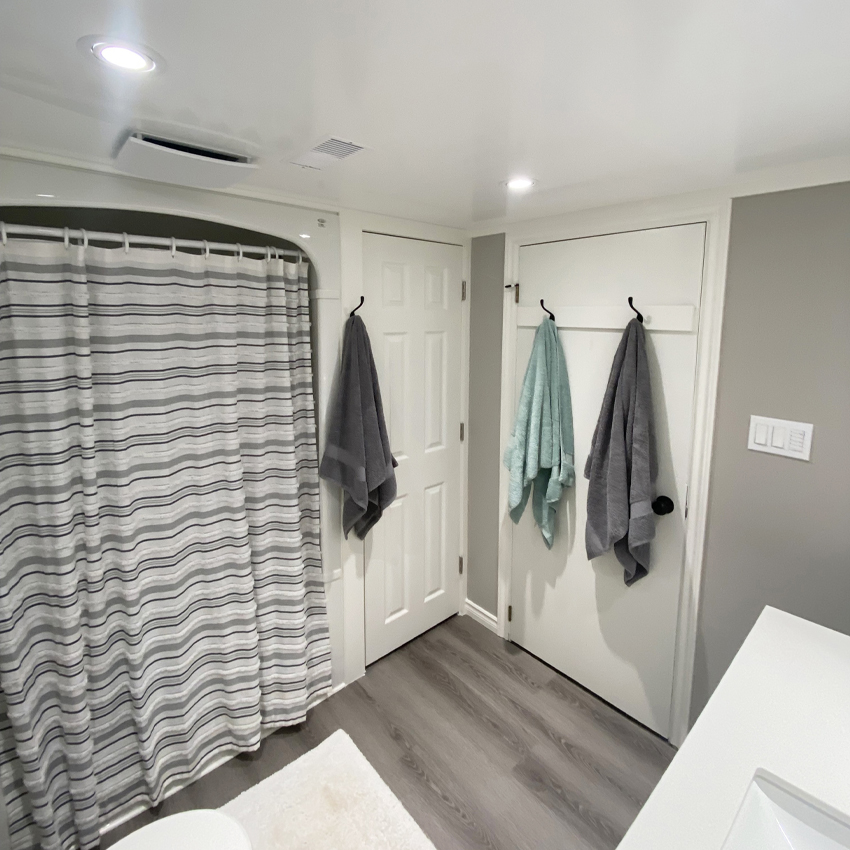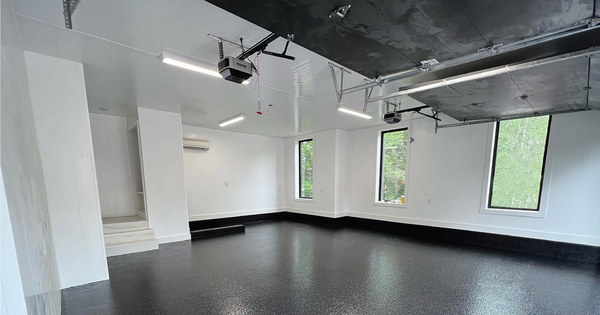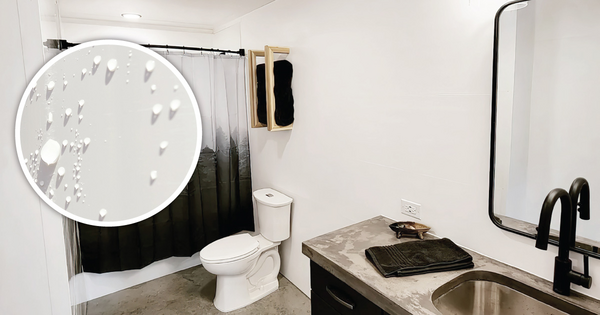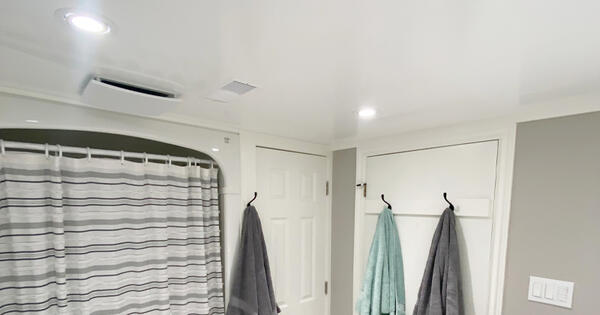When it comes to creating a healthy and durable living space, one crucial factor often overlooked is mold resistance. Mold growth not only poses serious health risks but can also compromise the structural integrity of our homes. That's why it's essential to understand the importance of using mold-resistant building materials in residential construction.
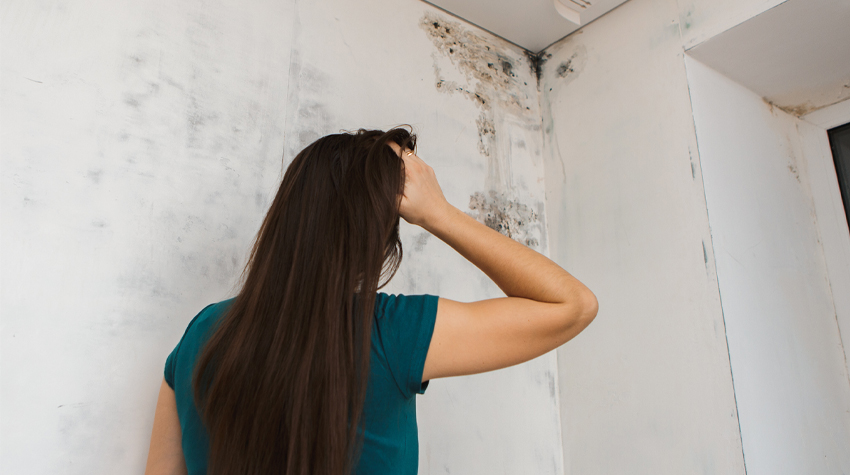
Understanding Mold
Mold is a fungus that thrives in damp, humid environments commonly found in residential spaces like bathrooms, kitchens, and basements. It reproduces by releasing spores into the air, which settle on surfaces and grow under favorable conditions of moisture, warmth, and organic matter.
Left unchecked, mold growth can cause unsightly stains and odors, pose serious health risks, and compromise the structural integrity of homes over time, leading to costly repairs and potential safety hazards.
Plumbing leaks, roof leaks, condensation, and high indoor humidity levels provide the ideal breeding ground for mold. At the same time, poor ventilation can exacerbate the problem by trapping moisture indoors and preventing it from escaping. Flooding or water damage can also lead to rapid mold growth if not properly remediated, as the excess moisture creates a prime environment for mold spores to flourish.
Benefits of Mold-Resistant Building Materials
Preventing mold growth in your home by building with mold-resistant materials does more than prevent stains and odors. It also helps to:
- Reduce the risk of health problems associated with mold exposure, such as allergies and respiratory issues. By keeping mold at bay, mold-resistant materials contribute to better indoor air quality, creating a healthier living environment for you and your family.
- Extend the lifespan of buildings by minimizing the risk of structural damage caused by mold and moisture. Mold can weaken building materials over time, leading to decay, rot, and eventual failure. By using materials that resist mold growth, homeowners can protect their investment and avoid costly repairs down the line.
- Require less maintenance compared to traditional materials over time. Since they’re designed to withstand moisture and inhibit mold growth, they are less prone to deterioration, discoloration, and staining. This means less time and money spent on cleaning, repairs, and replacements, resulting in lower maintenance costs over the building's life.
Best Mold-Resistant Building Materials for Residential Construction
There are several mold-resistant materials available for residential construction, each offering unique benefits and applications.

Mold-Resistant Drywall
Mold-resistant drywall, also known as moisture-resistant or green board, is designed with additives like fiberglass, gypsum, and wax to make it better at resisting mold and moisture compared to regular drywall.
Mold-resistant drywall not only discourages mold growth by creating a less hospitable surface for mold spores but also has a moisture-resistant facing that repels water, reducing the chances of mold. Its denser and less absorbent core further helps prevent mold from thriving. However, it’s not a perfect answer to mold for your walls.

Mold-Resistant PVC Panels
PVC panels like Trusscore Wall&CeilingBoard have a non-porous and antimicrobial surface that is 100% resistant to water and moisture and will never grow mold or mildew.
The panels are also installed with a watertight seal that will prevent water from seeping behind them and accessing your insulation or framing.
Plus, in high-moisture environments or in homes at risk of flooding, you can add silicone between the tongue and groove of Trusscore Wall&CeilingBoard panels for even more protection.

Mold-Resistant Paints
Mold-resistant paints have additives such as fungicides and antimicrobial agents that actively prevent mold and mildew from growing on painted surfaces.
Mold-resistant paints form a protective barrier against moisture, keeping interior walls and ceilings safe. They’re durable and can be cleaned regularly without losing effectiveness.
Plus, mold-resistant paints come in various colors and finishes to suit different design styles while effectively fighting mold.

Mold-Resistant Insulation
Certain insulation types, like closed-cell spray foam and fiberglass with a moisture-resistant facing, are less likely to attract mold.
They achieve this by preventing moisture buildup within the insulation and allowing moisture vapor to pass through.
Some insulation types even contain antimicrobial additives to discourage mold growth, ensuring good indoor air quality and structural integrity.

Mold-Resistant Flooring
Flooring material like ceramic tile, porcelain tile, and vinyl plank flooring naturally resist mold and moisture because they’re non-porous and won’t absorb moisture.
Some mold-resistant flooring may also have additives or treatments to inhibit mold growth on the surface.
Proper installation techniques also help minimize moisture buildup under the flooring, reducing the risk of mold growth.

Mold-Resistant Sheathing and Framing
Using engineered wood products treated with mold inhibitors, like oriented strand board (OSB) and plywood, for sheathing and framing helps prevent mold growth inside your walls and your roof.
OSB and plywood resist moisture absorption and may include additives that discourage mold growth.
Additionally, they feature design elements like ventilation channels and drainage planes to remove moisture from the building envelope.

Mold-Resistant Silicone and Caulking
Silicone-based sealants and caulk enhanced with mold inhibitors are used to seal joints and gaps in building materials, preventing moisture intrusion, and inhibiting mold growth in moisture-prone areas.
These sealants and caulk create a waterproof barrier that remains flexible and durable over time.
Additionally, they may contain additives or treatments that discourage mold growth on the surface, simplifying maintenance and preserving effectiveness.
Factors to Consider When Choosing Mold-Resistant Materials
When choosing mold-resistant materials for your home, there are several factors to consider to ensure each material’s effectiveness and suitability for your home’s specific needs:
- Material type: Different materials offer varying degrees of mold resistance. Consider the characteristics of each material and how they align with your project requirements. For example, mold-resistant drywall may be suitable for interior walls, while mold-resistant flooring may be necessary for areas prone to moisture.
- Mold-resistant properties: Evaluate the specific mold-resistant properties of each material, such as moisture resistance, antimicrobial additives, and ease of cleaning. Look for materials that actively inhibit mold growth and are designed to withstand high-moisture environments.
- Durability: Choose materials that are durable and long-lasting to ensure optimal performance over time. Consider factors such as wear resistance, impact resistance, and maintenance requirements when selecting mold-resistant materials.
- Compatibility: Ensure that the mold-resistant materials you choose are compatible with other building components and construction methods used in your project. Consider factors such as installation requirements, compatibility with adhesives and sealants, and integration with existing building systems.
- Certifications and standards: Look for mold-resistant materials that have been tested and certified by reputable organizations for compliance with industry standards and guidelines. Certifications such as GREENGUARD Gold, UL GREENGUARD, and ASTM D3273 indicate that a product has met rigorous testing criteria for mold resistance and indoor air quality.
- Manufacturer reputation: Choose mold-resistant materials from reputable manufacturers with a track record of producing high-quality, reliable products. Research the manufacturer's reputation, reviews, and certifications to ensure product quality and reliability.
- Cost: Consider the cost of mold-resistant materials relative to your budget and project requirements. While mold-resistant materials may have a higher upfront cost compared to standard materials, they can help prevent costly mold remediation and repairs in the long run.
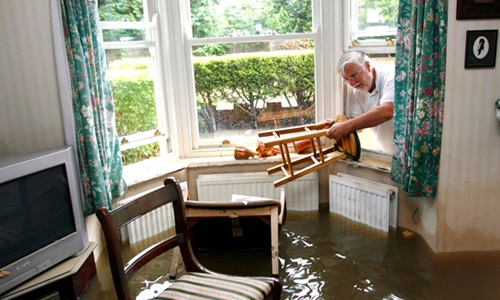
Harden Your Home’s Interior for Hurricane Season with
Trusscore Wall&CeilingBoard
Hurricane floodwater wreaks havoc on drywall — it swells, loses its strength, absorbs bacteria and chemicals, and becomes a breeding ground for mold in just 24 to 48 hours.
Made from PVC, pre-finished Trusscore Wall&CeilingBoard panels are the perfect, flood-resistant alternative for homes in hurricane-prone states.
Practical Tips for Preventing Mold Growth
Even with mold-resistant building materials in place, you should still take some practical steps to prevent moisture build up and mold growth in your home:
- Proper ventilation: Ensure that your home is well-ventilated, especially in areas prone to moisture buildup like bathrooms, kitchens, and laundry rooms. Use exhaust fans to remove moisture and humidity from these areas during and after activities like showering or cooking.
- Control humidity levels: Keep indoor humidity levels between 30 to 50% to discourage mold growth. Use a dehumidifier, if necessary, especially in basements or other areas with poor ventilation. Make sure to empty and clean the dehumidifier regularly to prevent mold growth inside the unit.
- Address water leaks promptly: Inspect your home regularly for leaks in plumbing, roofs, windows, and foundations. Repair any leaks immediately to prevent water from seeping into walls, ceilings, or floors where mold can thrive. If you discover water damage, dry the affected area thoroughly within 24 to 48 hours to prevent mold growth.
- Clean and maintain gutters: Keep gutters clean and free of debris to prevent water from accumulating and seeping into your home's foundation or walls. Ensure that downspouts direct water away from the foundation to prevent moisture buildup.
- Promote air circulation: Keep furniture and belongings away from walls to allow air to circulate freely and prevent moisture buildup. Use fans to promote air circulation in poorly ventilated areas.
- Use mold-inhibiting products: Consider using mold-inhibiting cleaners and additives in areas prone to mold growth, such as bathrooms and kitchens. Regularly clean and disinfect surfaces to remove mold spores and prevent their proliferation.
By implementing these practical tips, you can help prevent mold growth and maintain a healthy indoor environment for you and your family.
